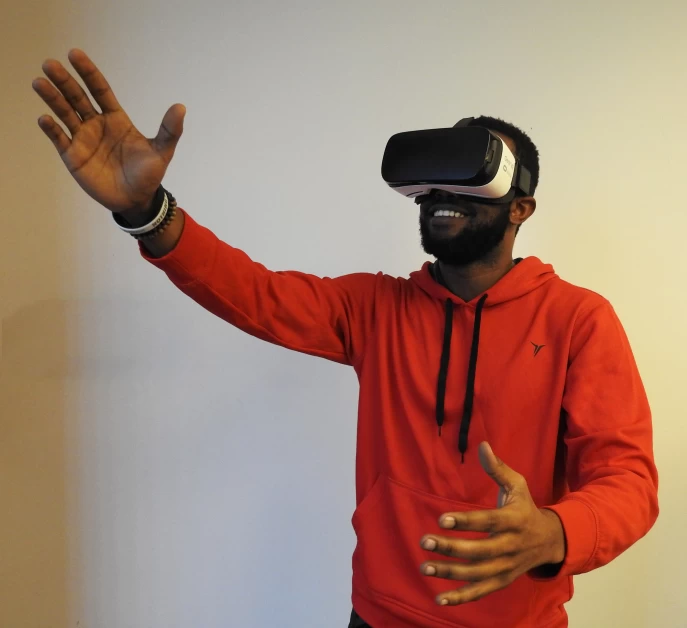Table of Contents
Introduction
Virtual reality (VR) is a rapidly growing technology that is revolutionizing various industries, from gaming to healthcare. Read through this article to see if you would like to Invest In Virtual reality for the upcoming future. As we look ahead to 2023, the virtual reality market is expected to experience significant growth and become even more prevalent in consumers’ lives. In this article, we will explore the latest virtual reality statistics and trends for 2023, providing valuable insights into this exciting technology.
Virtual Reality Market Overview
- The global virtual reality market is valued at approximately $200 billion as of 2023. It is projected to reach $425.16 billion by 2030, expanding at a compound annual growth rate (CAGR) of 7.85% between 2023 and 2030.
- The virtual reality market is expected to grow at a CAGR of 7.85% between 2023 and 2030, resulting in a market size of $425 Billion by 2030.
Virtual Reality Users
- The number of global VR users surpasses 100 million worldwide.
- In the United States alone, the number of VR users is set to reach 70 million by the end of 2023.
VR Headset Sales
- The global unit sales of VR headsets are projected to increase from 40 million in 2023 to 66 million in 2025.
- In the United States, the number of VR users is expected to reach 70 million in 2023, equivalent to 22% of the population.
Virtual Reality Experiences in 2023
In 2023, virtual reality experiences are expected to become even more immersive and accessible to consumers. With advancements in technology and an increase in demand, here are some of the virtual reality experiences we can expect to see:
1. Gaming
Virtual reality gaming is already a popular form of entertainment, and this trend is only expected to grow in 2023. With high-quality graphics, realistic simulations, and interactive gameplay, VR gaming provides an immersive experience that traditional gaming cannot match. From action-packed adventures to puzzle-solving challenges, virtual reality offers a wide range of gaming experiences for players of all ages.
2. Education and Training
Virtual reality is increasingly being used as a tool for education and training purposes. In 2023, we can expect to see more educational institutions, from schools to universities, integrating virtual reality into their curriculum. VR simulations can provide hands-on learning experiences in various subjects, allowing students to explore historical events, conduct scientific experiments, or practice real-life skills in a safe and controlled environment.
Virtual reality is also being widely adopted in professional training programs. Industries such as healthcare, aviation, and military use VR simulations to train their personnel and enhance their skills. Virtual reality offers a cost-effective and convenient solution for training, reducing the need for physical resources and minimizing risks associated with certain training scenarios.
3. Social VR
Social VR experiences are becoming more popular, enabling users to interact with others in virtual environments. In 2023, we can expect to see an increase in social VR platforms and applications, allowing individuals to connect with friends, family, and even strangers from around the world.
These social VR experiences can range from virtual meetings and conferences to multiplayer games and social events. Users can create avatars, explore virtual spaces, and engage in real-time conversations with others, providing a sense of presence and social connection that traditional video calls or messaging apps cannot replicate.
4. Healthcare and Therapy
Virtual reality has immense potential in the field of healthcare and therapy. In 2023, we can expect to see further advancements in using VR for pain management, rehabilitation, and mental health treatments.
Virtual reality can be used to distract patients from pain during medical procedures, reducing the need for anesthesia or medication. It can also assist in physical therapy by creating interactive exercises and simulations that promote patient engagement and motivation.
For mental health, virtual reality can provide exposure therapy for individuals with phobias or anxiety disorders. By creating virtual scenarios that simulate feared situations, VR enables patients to confront their fears in a controlled environment, gradually reducing anxiety and improving their quality of life.
5. Virtual Travel and Exploration
With travel restrictions and safety concerns in place, virtual reality offers an alternative way to explore the world. In 2023, we can expect to see more virtual travel experiences, allowing individuals to visit famous landmarks, historical sites, and natural wonders without leaving their homes.
Whether it’s climbing Mount Everest, strolling through the streets of Paris, or diving into the Great Barrier Reef, virtual reality can transport users to any destination they desire. These virtual travel experiences can provide a sense of adventure, cultural immersion, and educational insights, making them an attractive option for those who are unable to travel in person.
Conclusion
As we look ahead to 2023, virtual reality is set to become an integral part of various industries and consumer experiences. With its immersive nature, realistic simulations, and endless possibilities, VR offers a new way to learn, play, connect, and explore. The virtual reality market is projected to experience remarkable growth in the coming years, and we can expect to see further advancements in technology and the development of even more exciting virtual reality experiences.







